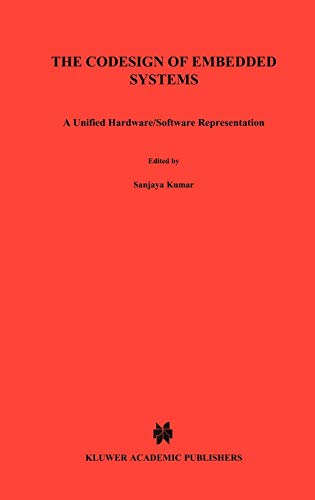The Codesign of Embedded Systems A Unified HardwareSoftware Representation

Free Download The Codesign of Embedded Systems: A Unified Hardware/Software Representation: A Unified Hardware/Software Representation by Sanjaya Kumar , James H. Aylor , Barry W. Johnson , WM. A. Wulf
English | PDF | 1996 | 288 Pages | ISBN : 0792396367 | 22.3 MB
Current practice dictates the separation of the hardware and software development paths early in the design cycle. These paths remain independent with very little interaction occurring between them until system integration. In particular, hardware is often specified without fully appreciating the computational requirements of the software. Also, software development does not influence hardware development and does not track changes made during the hardware design phase. Thus, the ability to explore hardware/software tradeoffs is restricted, such as the movement of functionality from the software domain to the hardware domain (and vice-versa) or the modification of the hardware/software interface. As a result, problems that are encountered during system integration may require modification of the software and/or hardware, resulting in potentially significant cost increases and schedule overruns.
To address the problems described above, a cooperative design approach, one that utilizes a unified view of hardware and software, is described. This approach is called hardware/software codesign. The Codesign of Embedded Systems develops several fundamental hardware/software codesign concepts and a methodology that supports them. A unified representation, referred to as a decomposition graph, is presented which can be used to describe hardware or software using either functional abstractions or data abstractions. Using a unified representation based on functional abstractions, an abstract hardware/software model has been implemented in a common simulation environment called ADEPT (Advanced Design Environment Prototyping Tool). This model permits early hardware/software evaluation and tradeoff exploration. Techniques have been developed which support the identification of software bottlenecks and the evaluation of design alternatives with respect to multiple metrics. The application of the model is demonstrated on several examples. A unified representation based on data abstractions is also explored. This work leads to investigations regarding the application of object-oriented techniques to hardware design.
The Codesign of Embedded Systems: A Unified Hardware/Software Representation describes a novel approach to a topic of immense importance to CAD researchers and designers alike.
[b]
FileBoom
jo2di.zip
DONWLOAD FROM RAPIDGATOR
jo2di.zip.html
DOWNLOAD FROM NITROFLARE
jo2di.zip
DONWLOAD FROM UPLOADGIG
jo2di.zip
Fikper
jo2di.zip.html
Related Posts
Magnificent Meals in a Bowl Cookbook Healthy, Fast, Easy Recipes with Vegan-and-Keto-Friendly Choices

Instrument of War Music and the Making of America’s Soldiers
